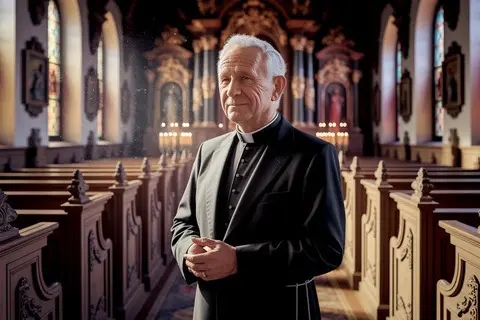Where There’s a Will, There’s a Way: Origin, Meaning, and Examples
Explore the meaning, origin, and practical applications of the popular proverb - Where There's a Will, There's a Way.

Where there's a will, there's a way for persistent work to conquer complex problems, even with limited resources or time. The expression was in English as early as the 1600s, and authors employed it to laud tenacity and unambiguous ambition. In everyday life, it appears in study plans, micro-savings, and incremental training schedules that accumulate. Work leads teams to scope, track a metric, and crack big jobs into short steps. In wellness, it backs habits such as 20-minute walks, meal prep, and sleep goals. In communities, it powers volunteer sprints and local hacks with everyday work. To bring it to life, the following chapters provide easy-to-implement techniques, brief case studies, and checklists that suit hectic weeks.
" When things feel impossible, focused, determined effort tends to find both solutions and hope. "
Key Takeaways
- It's a saying that reminds us that will creates way — that when things feel impossible, focused, determined effort tends to find both solutions and hope. Use it as an agile mental reset to attune yourself to what you can control and try the next micro-step.
- Its roots run deep from George Herbert's 1640 collection to reverberations in Latin, Welsh, Spanish, and beyond, reflecting a widespread faith in tenacity. Acknowledge that this folk wisdom has steered humanity from culture to culture for generations.
- As we'll see, grit and a growth mindset go well with the proverb and often outperform talent or luck as success predictors. Exercise grit by establishing well-defined objectives and sub-goals and reviewing your progress weekly in metrics (minutes practiced, pages solved, etc.).
- Motivation builds in a spiral that begins with a flash of will, then action, then momentum from micro-triumphs. Record small daily victories and rejoice in quantifiable advancement to maintain your drive.
- Willpower is most effective when combined with planning, skills, and support. Make reasonable plans, acquire the missing skills, ask for appropriate help, and pivot your plan when costs or risks overwhelm benefits.
- Put the saying into practice by combining faith with roadmaps. For school, plan study blocks in 25-minute chunks. For play, create a daily priority task. For personal goals, pledge 10 minutes a day and check back weekly.

The Phrase's Deeper Meaning
At its core, the proverb points to a simple claim: substantial intent changes how we see and solve problems. It doesn't pledge quick victories. Instead, it refers to an attitude that propels us forward when obstacles appear. This concept emphasizes how hard will can shove us beyond impasse and into motion. In psychology, determination is categorized as an activating positive emotion that promotes goal-directed behavior, with some research describing it as challenge or anticipatory enthusiasm. That feeling changes how we deploy fundamental elements of cognition—perception, memory, reasoning, decision making, and even number sense—so we observe previously overlooked possibilities. Problem solving occupies cognitive psychology, and the 'will' part prepares us to scan, test, and adjust. In AI and educational psychology, related concepts emerge as search, heuristics, and grit in learning. Citations are still needed to tie each thread, but the shared theme is clear: intent changes strategy.
The adage serves as a little bit of hope. When strategy collapses, it signals that work + hours can carve a road. Imagine a student who bombs an exam, then reconstructs using spaced recall and past papers. Or a cash-strapped team that moves to lean tests, short sprints, and low-cost trials. Hope does not cancel complex realities; it stabilizes the arm long enough to attempt the next step. This notion of persistence is vital as it encourages us to face challenges head-on.
It's frequently employed as a fire to forge ahead after a failure. That's where grit and ingenuity count more than genius or fortune. Talent assists, luck assists, but little attempts—re-imagine the assignment, get feedback, conduct a mini-pilot—tend to nudge the needle. Willpower and commitment sit close by: to will one path is to set aside others, which cuts noise and speeds choice.
There's a deeper, almost instinctual note, as well. Others associate "will" with "wild," believing that forceful desire can rouse a more primitive, instinctual way of being. The "Wild Indigenous One" concept directs us toward that instinctive, feral navigator that senses a hard-worn path in the bramble when a map falls short. Will can mean desire or predilection, and giving that desire a name illuminates purpose. The latter recalls older versions such as 'To him that will, ways are not wanting,' and possibly goes back to George Herbert's 1640 proverbs. It is near-universal, but not absolute; sometimes the way remains closed despite our desire. Even then, the search hones craft, sharpens sensibility, and expands future possibilities, reinforcing that courage and resourcefulness can lead to unexpected answers.
In conclusion, determination, hope, and the willingness to adapt are crucial in overcoming obstacles. This journey is not just about talent or luck but also about the courage to face adversity and the persistence to keep trying. As we navigate challenges, we learn that while some paths may seem blocked, searching for alternatives sharpens our skills and expands our horizons. The wisdom of past thinkers, like George Herbert, reminds us that a strong will can create opportunities where none seem to exist.
Related Tips
Origin of "Where There's a Will"
The oldest print, by the way, is George Herbert's Jacula Prudentum (1640). He penned, "To him that will, ways are not wanting," a phrase that embodies the strong determination needed to overcome obstacles. This concept, most attributed to the origin of our modern saying, has endured through time, with its message appearing in books and speeches for nearly 400 years. The precise origin is contested, as prior English compendiums and 'outlandish' proverb catalogs showcase similar expressions.
1. Ancient Echoes
Ancient Latin framed resolve as force: Nil volentibus arduum ("Nothing is hard for the willing"). Early Welsh wisdom celebrated grit against the odds, connecting will to trailblazing.
Old English sources resound in spirit, Spanish - hay un camino donde hay voluntad French vouloir, c’est pouvoir, German goes Wo ein Wille ist, ist auch ein Weg, Arabic proverbs connect will with doors opening.
Across cultures, the pattern holds: when people focus, they find steps, allies, and tools. We now refer to mental toughness and resilience—skills that enable us to maintain our composure in the crucible and bounce back to shape.
These ancient lines formed the foundation for Herbert's abbreviated rendition that captured the 17th-century spirit of investigation during the Scientific Revolution.
2. Proverbial Roots
It's accompanied by short tutorials such as "Nothing is impossible for the willing" and "Fortune favors the bold." It works because it condenses guidance into a phrase we can remember under pressure.
Unlike "No pain, no gain," it focuses on purpose. Compared with 'Try, try again,' it adds agency. It hints at analytic skills: breaking the problem into subgoals, testing a path, sharing clear steps, and learning from data.
Proverbs travel because they teach quickly. They behave like subgoal labels in school and work—brief hacks that decrease burden and direct mental schemata.
Consider a simple table: map each saying to effort, grit, and method. It illustrates how words prod to action.
3. Literary Mentions
Herbert grounds the line. Reviewers have pointed out how fitting his line seemed in an era that described the cosmos in mechanical terms. By the 1820s, print displays the very same shape we utilize nowadays.
Eliza Cook's poems and 19th‑century essays, such as William Hazlitt's moral fragments, kept the motif alive. Plays and songs employed the line to shift plot and heart, propelling characters beyond fear. That went around and cooked it into inspirational prose and lectures.
4. Modern Usage
Pop culture leans on it — film heroes rally a team, song hooks extol grit, novels map arcs where will encounters method. Coaches and teachers associate it with resilience, grit, and zest, which elevate effort when defense physiology takes hold.
Real life echoes: a student uses subgoal labeling to pass a challenging exam; a worker constructs analytic habits–research, data checks, clear notes–to pivot careers; someone applies mindfulness to confront addiction, then crowdsourcing for peer backup; teams leverage open online collaboration or virtual labor markets such as Amazon Mechanical Turk to accelerate work when budgets are lean.
You hear it in speeches, commercials, and social posts. Make your list: health, study, money, or community work. Identify the will, then outline the path with modest, experimentable steps.
A note on word roots: Some link "will" to Old German "wald" (forest), but standard etymology ties it to desire and choice. The essence of the proverb is will, not willows.

The Psychology of Willpower
Willpower is the mental muscle to keep pushing for a target in the face of obstacles, procrastination, or uncertainty. This concept underlies the saying, 'where there's a will, there's a way,' connecting it to grit, resilience, and concentrated attention. Research indicates that grit and a growth mindset are better predictors of success than innate ability, and believing you have a shot at success increases effort and performance. Willpower fades with use (ego depletion), but we can plan, rest, and design cues to support it.
The Grit Factor
Grit mixes passion and perseverance around a long-term goal. It helps them through boredom, initial failures, and the temptation to quit, like the Finnish concept of sisu—a silent, persistent push in tough stretches. Grit pairs with focused concentration and creative problem-solving: you widen options with divergent thinking, then narrow with convergent thinking to pick a path.
The saying worships the consistent laborer. Tireless practice in sport, years of deliberate study, or a founder who iterates after every failed prototype—these patterns demonstrate grit more than flair. The marshmallow test hints at this: kids who delayed reward tended to do better later. However, later work shows context and support matter, including a study linking infant brain activity to greater maternal financial support.
- Checklist of gritty wins:
- Historical: a scientist testing hundreds of variants before a safe method; grit is the long arc, not one bright day..
- Personal: learning a new language by daily 20-minute drills; divergence for practice ideas, convergence for a weekly plan..
- Process: run small trials, track errors, adjust strategy; treat setbacks as data, not verdicts.
The Mindset Link
Faith that a way may be found predisposes the mind to discover ways. It informs strategy selection, feedback use, and how much effort seems "worth it." Other researchers contend that willpower is linked to smartness and strategizing, not just brute force determination.
A hopeful, yet clear-headed attitude transforms "impossible" into "not yet figured out." Jung described the ego as an army commander and the Self as the general — seek to have the grander Self direct decisions, not immediate urges alone.
Confidence builds through patient labor. As complexes can "have us," name triggers, reframe them, and move on. Think about a time a new frame–such as writing a crisp problem statement with ideal, reality, consequences, and proposal–generated a breakthrough.
The Motivation Cycle
Passion ignites the initial step, while strong determination generates evidence, and evidence establishes belief. Each small win breathes new life into the saying that setbacks arrive; persistence and clever problem-solving keep the cycle going. Ego depletion is absolute–Baumeister, Vohs, and Tice even correlated emotion suppression with reduced muscle strength–so meter exertion, take breaks, and draw on resources.
- Checklist to fuel the cycle:
- Track micro-metrics in metric units (e.g., 2 km run, 10 minutes of study).
- Use creative problem-solving: diverge for options, converge for one next step.
- Troubleshoot: List symptoms and test causes, confirm fixes, and update strategy.
- Align with the Self as 'determining psychic factor,' and design supports so that the will does not work alone.
Related Tips
When "Will" Isn't Enough
Passion is helpful, but it doesn't obliterate obstacles. Success requires time, talent, equipment, and reasonable probabilities. Collective intelligence teaches us that remarkable results frequently emerge from joint work, not solitary willpower. In disciplines with 'grey problems' like IT, triggers are murky, bugs are sporadic, patches are difficult to attribute, and unstructured willpower squanders effort. Problem structuring methods come in handy here. They visualize murky goals, highlight compromises, and generate alignment in teams. They embrace that no one perspective has the truth, a critical stance when a "wicked problem" moves as you do. In brief, trust in your method enables you to advance.
A will without capital, talent, or distribution hits walls. A runner who only runs long, slow miles may develop endurance, but if they skip resistance work, they will lose strength. The same applies in work: you may outlast fatigue, but without cross-training—new skills, small tools, mentors—you can't lift the next load. Endurance boosts spirits and reduces strain, yet stamina alone can't save a bad strategy or an antagonistic policy. Military doctrine defines endurance as prolonged fighting strength; that strength relies on supply lines, information, and comrades—not will alone.
Reality-fitting goals save time and pride. Begin with explicit goals, brief iterations, and measurable outcomes. If the numbers are wrong, redirect. A high need for achievement is valuable if complemented by feedback and standards; on its own, it can drive people to pursue status, discount base rates, and burn out. Social dominance dynamics can twist who receives assistance or acknowledgment. With this knowledge, you can strategize how to expand the circle, leverage ensemble methods, and verify bias.
Blind push has prices. When it comes to estate planning, a will isn't often sufficient. A will can still cause an estate to go to probate, a lengthy and expensive court process. Assets can shrink, and fees can increase. Fights still happen—ask Gloria Vanderbilt and Aretha Franklin, whose estates were fought over even with wills. A will is one component; trusts, beneficiary forms, health and financial powers, and precise documentation minimize disputes and processing slowdowns. Thoughtful planning preserves dreams, worth, and bonds.
Balance will be achieved with flexibility, preparation, communal meaning-making, and scaffolding.

Global Variations and Echoes
Across languages, the proverb points to the same core idea: resolve can open paths. Every culture inflects it with its perspective on patience, resilience, and the importance of community. This nuance is important because achievement doesn't often sit on will alone; social economics, parenting, and communal backup craft what "a way" appears like and who has access to it. Trust and support can be the key to overcoming obstacles in many circumstances.
The Spanish, Welsh, and Latin lines sound familiar but differ. Spanish proverbs connect determination with patience and consistent effort, and Welsh expressions have a no-nonsense practicality. Latin, grounded in Stoic habit, favors cultivated endeavor. These reverberations illustrate how volition–our decision to take action–colludes with the environment. Volitional acts are teachable, practiced, habit-forming things, and many cultures combine that with patience as a time tactic and a moral lodestone.
World literature and songs echo this motif. From epics in which heroes suffer extended ordeals to ballads that laud patient hands, the moral camps alongside kindred verses such as "this too shall pass" and "time cures all scars" resonate deeply. These expressions establish priorities, arrest panic, and preserve energy for what's next. Still, proverbs are ancient instruments—some are centuries-honed—and can reduce complex things too much. Grit assists, but absent networks and fair opportunity, will bog down progress. That's why communities of practice (physical or virtual) matter. A CoP develops common knowledge (domain), trust (community), and daily expertise (practice). Inside these circles, people learn faster, solve client needs sooner, and spark innovation—defined in ISO 56000:2020 as a new or changed thing that creates or shifts value.
Leadership falls into this group frame as well. It's not lonely at the top when leaders lead like a tribe, establish goals, employ confident but receptive communication, and scan collective consciousness. We humans do that early—babies detect joint intentions—and groups can perfect it. Assertiveness assists individuals in expressing needs and evaluating concepts, while grit aids them in persisting. Some wins dissipate, and some reverberate for decades, even lifetimes—time will reveal what persists and what remains an impossible feat.
| Language | Variant | Literal translation |
|---|---|---|
| Spanish | Querer es poder | To want is to be able |
| Welsh | Lle bo ewyllys, ceir ffordd | Where there is will, a way is found |
| Latin | Volentem fata ducunt | The fates lead the willing |
Using the Phrase Today
Commonly used for more than four centuries, 'where there's a will, there's a way' continues to indicate that a strong will can drive through obstacles. This universal truth is often cited to ignite action, calm anxiety, and position challenges as opportunities. The phrase now carries nuance: will alone does not solve the task; clear plans, tools, and support help turn will into results, emphasizing the importance of strong determination in overcoming barriers.
Use it in speech and writing with simple, straight lines that suit everyday life. Examples:
- If there's a will, there's a way—let's plot the path.
- She picked up some simple coding in her off-hours, because when there's a will, there's a way.
- "We haven't got the budget yet, but where there's a will, there's a way if we split costs.
- He was running 5 km daily – if there's a will, there's a way.
In academic settings, apply the concept by chunking study into small units, utilizing spaced review, and requesting feedback. In the workplace, identify the block, outline two workarounds, and heuristically try on the smaller path first. In a coworking space—shared offices with a receptionist and power from WeWork, IWG plc, Industrious, or Impact Hub—leverage the network to discover mentors, trade skills, and reduce expenses via dues. Plan modest, steady health or personal growth habits: a 20-minute walk daily or one hard talk a week to mend a strained bond.
Strong will counts. Ethics has traditionally considered will as a central mind faculty associated with free will, choice, and action. History and art remind us that we can encounter hard roads. Singer Etta James had ferocious will but sometimes got lost. The gap reveals why a will requires a method. Positive psychology identifies psychological hardiness—commitment, control, and challenge—as the mindset that maintains health in the face of stress. Build hardiness and add structural fixes that alter settings and incentives, not just moods.
For conflict resolution, the will for peace needs a process: law, mediation, and collaborative steps. In science, instrumentalism calls a theory an instrument. In life, treat the proverb like that—handy if it aids in predicting and guiding the next move, especially when facing many challenges and obstacles.

Conclusion
To bring it home, the old saying still applies. Tactical moves complete the work. We have history to support it. So does grit and goal science. Nobody triumphs on will alone. We require weapons, companions, opportunity, and equal chances. That combination transforms aspiration into accomplishment.
Here's a little scene that lingers with me. One street vendor in a busy square exchanges plastic cups for metal. Less garbage. Reduced expenses. No-brainer. Day by day, sales increase. Not luck. Not myth. Just will with a plan.
First, choose a goal. Define a next step. Track it in a bare-bones log. Pass it along to a pal. Leave the phrase as a prod, not a dictate. Then take that next step today.
Related Tips







